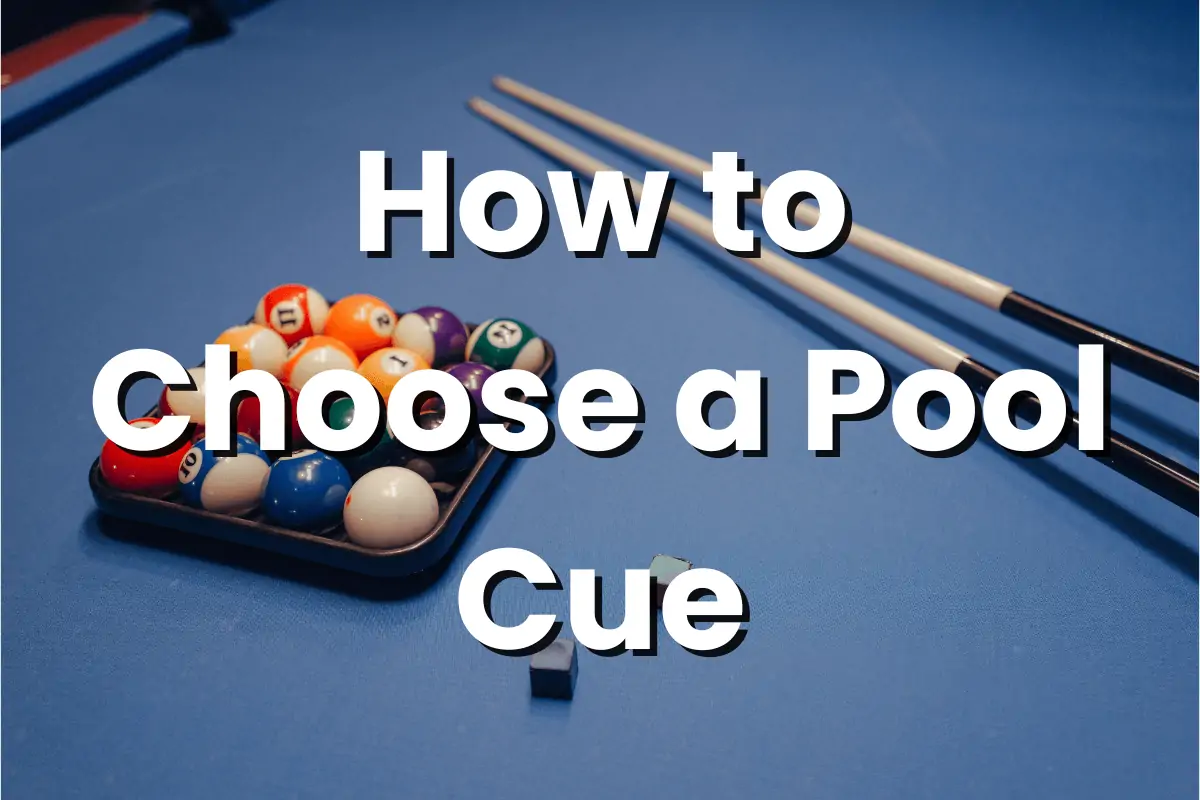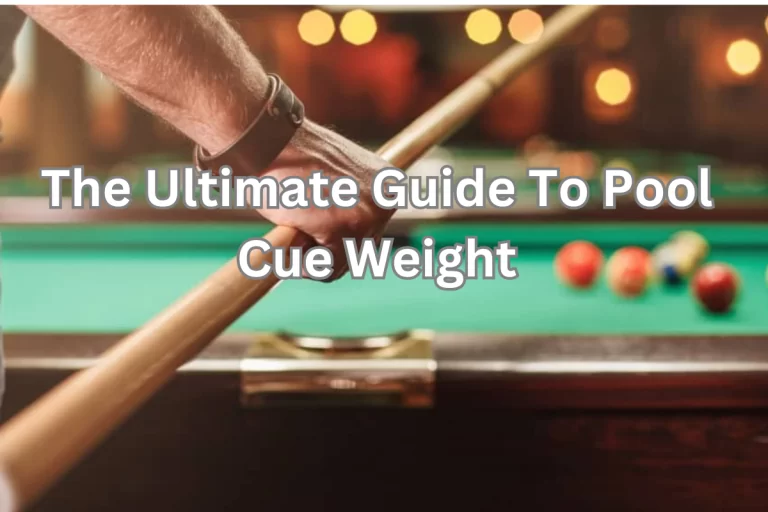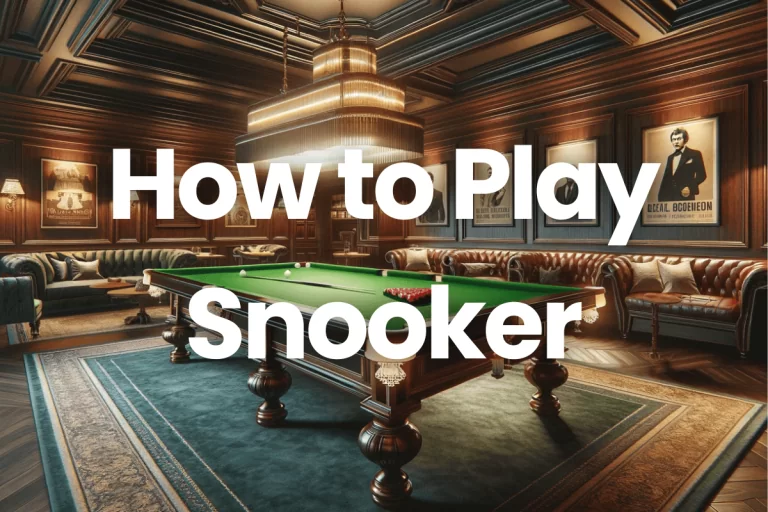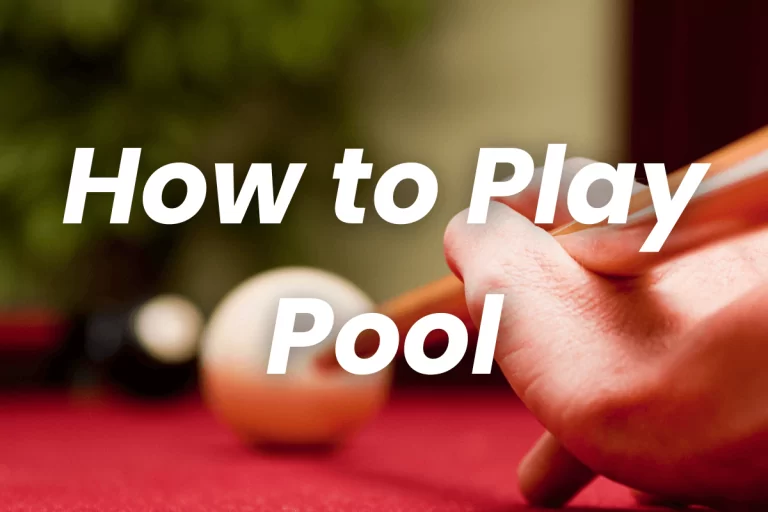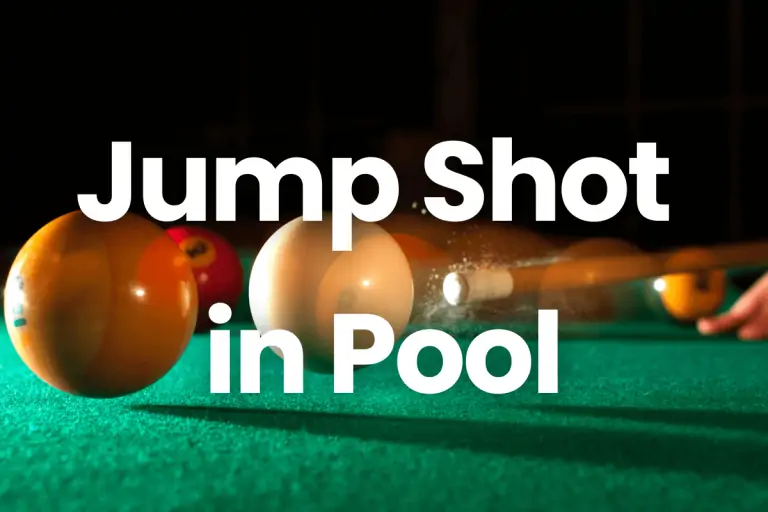How to Choose a Pool Cue | Secrets to Select a Perfect (2024)
Selecting the right pool cue is a crucial step in mastering the art of billiards. This guide on ‘how to choose a pool cue’ focuses on delivering reliable and expert advice, ensuring you make an informed decision. Whether you’re a novice or a seasoned player, understanding the nuances of choosing the perfect cue is essential. We’ll provide comprehensive insights and tips, helping you navigate through the various aspects of pool cue selection, and ensuring that your choice enhances your gameplay and enjoyment of the sport.
Understanding Pool Cue Basics
A pool cue, essentially a slender, tapered stick, is the primary tool in billiards, used to strike the cue ball. Its role is fundamental, as it influences the power, spin, and accuracy of shots, directly affecting a player’s performance. A good cue acts as an extension of the player’s arm, offering precision and control.
Tracing its history, pool cues have evolved significantly. Initially, players used maces, a type of club, in billiards. As the game evolved, the mace’s design proved cumbersome, especially in shots near the billiard table’s rails. This led to the development of the cue stick in the late 17th century, a more slender and practical alternative.
Over time, cues have undergone various enhancements. From the simple wooden sticks of the past, today’s cues incorporate advanced materials like fiberglass and carbon fiber for improved strength and flexibility. The evolution also brought about specialized cues for different billiards games, each designed to meet the specific requirements of games like snooker, pool, or carom billiards.
How to Choose a Pool Cue
Types of Pool Cues
Pool cues come in various types, each tailored to different styles of billiards games and player preferences. The main types include English, American, and Snooker cues, each with distinctive features and design elements.
English Pool Cues: These cues are typically lighter and have a smaller tip diameter, usually around 8 to 9 mm. They’re designed for games like English billiards and blackball (popular in the UK and Ireland). The smaller tip allows for more precise control of the cue ball, especially for spin and finesse shots.
American Pool Cues: American cues are generally heavier and have larger tips, ranging from 12 to 13 mm. They are used in games like nine-ball and eight-ball, which are prevalent in the USA. The larger tip and heavier build provide greater power, making them suitable for games that require more forceful shots.
Snooker Cues: Snooker cues fall in between English and American cues in terms of weight. They have a tip size typically around 9 to 10.5 mm. These cues are designed for snooker, a game requiring great precision for long, straight shots on a larger table. Snooker cues often feature ash wood construction, known for its straightness and smooth taper.
Key Factors to Consider When Choosing a Pool Cue
Selecting the right pool cue is a blend of personal preference, physical attributes, and the type of game you play. Here are key factors to consider:
Length: The standard cue length is 57-58 inches, suitable for most adult players. However, cues can range from 48 inches (for juniors or players of shorter stature) to 61 inches. The ideal length depends on your height and arm length. Taller players may prefer longer cues for better reach, while shorter players might opt for a more manageable length.
Weight: Cue weights typically range from 17 to 21 ounces. Heavier cues offer more power, ideal for break shots, whereas lighter cues provide better control and finesse. Beginners might start with a middle-range weight (around 19 ounces) and adjust as they develop a feel for their playing style. Comfort and ease of stroke are critical here.
Material: The most common materials for cues are maple and ash, known for their durability and resilience. Maple is popular in American pool cues, while ash is often chosen for snooker cues. Fiberglass and carbon fiber are also used, particularly in cues designed for resilience and consistent performance. The material can affect the cue’s flexibility, weight, and overall feel.
Tip Size and Type: The tip is the cue’s only part that contacts the ball, making its size and material crucial. Pool cue tips range from 9 to 14 mm. Larger tips (common in American pool cues) are better for powerful shots, while smaller tips (found in snooker and English pool cues) allow for more precise control. Tips are made from materials like leather, phenolic resin, or laminated leather, each offering different levels of hardness and impact on shot control.
Customization and Personal Preferences
When it comes to choosing the perfect pool cue, personalization plays a significant role, allowing players to reflect on their style and enhance comfort. Here’s how customization and personal preferences factor into the selection process:
Wraps: The wrap of a cue is the section where your backhand rests. Options include leather, Irish linen, rubber, or even wrapless designs. The choice depends on the feel you prefer in your grip. Leather offers a luxurious feel, linen provides a drier grip, rubber ensures a firmer hold and wrapless cues are sleek and smooth. Your comfort with the grip can influence your control and stability during shots.
Colors and Designs: Pool cues are available in a wide array of colors and designs, from classic wood finishes to vibrant and patterned options. While the aesthetic aspect doesn’t affect the cue’s performance, it does add a personal touch to your game. Choosing a design that resonates with you can make the game more enjoyable and can even be a confidence booster.
Custom Inlays and Artwork: For those looking for a truly unique cue, custom inlays and artwork can be commissioned. These cues can feature intricate designs, personalized messages, or bespoke artwork, turning your cue into a one-of-a-kind piece.
Balance Point and Joint Type: The cue’s balance point and the type of joint (where the cue is divided) can be chosen based on personal preference. Some players prefer a forward balance for a heavier feel at the front, while others might opt for a back-balanced cue. Similarly, different joint types (like stainless steel or phenolic) affect the cue’s feel and feedback.
Expert Tips and Advice for choosing the right cue
Gleaning insights from professional pool players and experienced coaches can significantly guide your decision on how to choose a pool cue that is right for you. Here are some expert tips and common pitfalls to avoid:
Balance is Key: Many professionals emphasize the importance of a well-balanced cue. It should feel comfortable in your hands and not too front or back-heavy. A balanced cue aids in maintaining a steady and controlled stroke.
Don’t Overlook the Shaft: Experts often suggest paying close attention to the shaft’s quality. A good shaft can greatly improve accuracy and consistency in your shots. Look for a straight, smooth shaft with no warps.
Tip Maintenance: Pros advise that the condition of the tip is crucial. A well-maintained tip (not too hard or too soft) can drastically affect your game’s precision. They recommend regular shaping and scuffing to keep the tip in optimal condition.
Avoid Impulse Buys: One common mistake is choosing a cue solely based on its appearance or because a favorite player endorses it. Remember, what works for one player may not suit another. It’s essential to try different cues and see which one feels right for you.
Test for Comfort: Experienced players often recommend testing several cues before making a purchase. Pay attention to how the cue feels in your stroke, the grip comfort, and if it complements your playing style.
Ignore Myths: Disregard myths like heavier cues break better. The best break cue is one that you can control effectively, regardless of weight.
Consider Skill Level: Beginners might not need an expensive, high-end cue right away. Start with a reliable, mid-range cue and upgrade as your skills improve.
Maintenance and Care
Proper maintenance and care are crucial for prolonging the life of your pool cue:
Regular Cleaning: Wipe your cue with a soft, dry cloth to remove dirt and oils. Avoid using water or harsh chemicals.
Tip Maintenance: Regularly shape and scuff the tip to ensure optimal contact with the ball. Replace the tip when it wears down.
Avoid Extremes: Protect your cue from extreme temperatures and humidity, as these can cause warping and damage.
Proper Storage: Store your cue in a flat position or hang it vertically in a cue rack. Avoid leaning it against walls or tables.
Use a Cue Case: When transporting, use a protective case to prevent scratches and dents.
Regular Checks: Periodically check your cue for straightness and any signs of damage.
Professional Help: For any significant repairs or adjustments, consult a professional.
Conclusion
The journey of ‘how to choose a pool cue’ is about balancing practicality with personal preference. From considering cue length and weight to assessing materials and tip types, each factor plays a crucial role in your playing experience. Remember to integrate these guidelines into your selection process. By doing so, you’re more likely to find a cue that not only meets your specific needs but also elevates your game, making every shot more enjoyable and effective.
FAQs
What is the best length for a pool cue?
The ideal length depends on your height and arm length. Most adult players are comfortable with a standard cue length of 57-58 inches.
How do I know if a pool cue is good quality?
While judging quality can be subjective, here are some key indicators:
- Material: Look for well-seasoned wood like maple or hickory, known for its durability and responsiveness.
- Construction: Check for smoothness, straightness, and a secure connection between the shaft, ferrule, and tip.
- Feel: The cue should feel comfortable and balanced in your hand, allowing for smooth cueing and precise control.
Can the weight of the pool cue affect my game?
Yes, cue weight impacts shot power and control. Heavier cues (19-21 ounces) are good for powerful shots, while lighter cues (17-19 ounces) offer better control.
Should I choose a one-piece or two-piece cue?
Two-piece cues are convenient for travel and storage. One-piece cues are often found in pool halls and might offer a different feel. The choice depends on personal preference and usage.
How often should I replace my pool cue tip?
It depends on how frequently you play. Regular players might need to replace the tip once a year. Always replace it if it’s hard, damaged, or doesn’t hold chalk well.
Does the material of the pool cue affect performance?
Yes, the material affects the cue’s flexibility, weight, and overall feel. Maple and ash are common for their balance and durability, while fiberglass and carbon fiber offer more power and stability.
What is the best way to store a pool cue?
Store it in a cool, dry place, either flat or in a vertical rack. Avoid leaning it against walls or exposing it to extreme temperatures to prevent warping.

